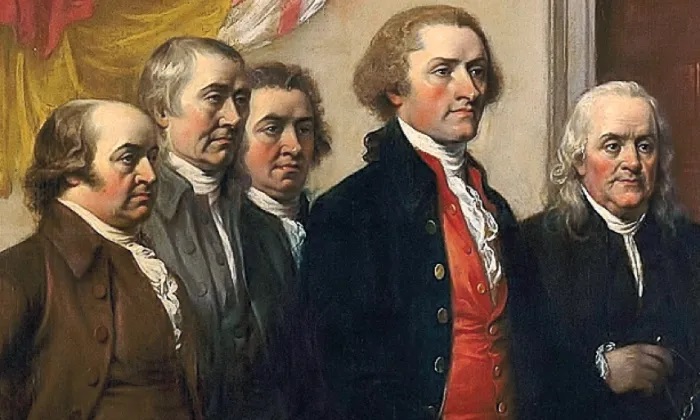There are two ways some people have reacted to the Ebola crisis: the Chicken Little approach, or the complacent approach. Neither is helpful or effective.

“Think of this America, please think of this,” Glenn Beck told listeners. “Every time somebody new gets the Ebola virus, it mutates. It’s going to go aerosol.”
“Fears of contagion spiked,” writes The New York Times (Oct. 18), “after one of the nurses said she had been on a domestic flight the day before she was admitted with symptoms of Ebola. That prompted some schools in Texas and Ohio to close. Authorities have since asked that staff members involved in treating Thomas Eric Duncan, the Liberian who died of Ebola, to avoid public spaces.”
Thanks to cable TV and social media, far too many have suddenly become medical experts, and they’re all locked and loaded on what the U.S. should do: institute a travel ban for individuals coming into the U.S. from infected countries.
On the other end we the fact that President Obama’s reassuring words that the crisis was under control relied on wrong information. The Times reported that Obama was “seething” over the lack of corrective action necessary to deal with the disease. “Guidance to local health teams was not adequate. It was unclear which Ebola patients belonged in which threat categories. … “He told aides they needed to get ahead of events and demanded a more hands-on approach, particularly from the Centers for Disease Control and Prevention (CDC).”
To that end, Obama has appointed “seasoned crisis-response operative” Ron Klain Ebola Czar to push, prod and oversee that the most effective action is being implemented by government officials as quickly as possible.
So what is the most effective strategy?
“If one takes the big-picture view,” Dr. Barry Bloom, a specialist in infectious diseases told the Times, “the most important thing that can be done to protect America from Ebola is controlling Ebola in West Africa.
What about the idea of a travel ban?
“Denying entry to people from Liberia, Guinea, and Sierra Leone would not stop the spread of Ebola into the U.S., said Aditya Bhattachariji, an analyst at the Eurasia Group, a political risk firm. A ban, he noted, would be impossible to accomplish with 100 percent effectiveness.
“Health quarantines have a long history, going back to the bubonic plague in Venice, said Dr. Howard Markel, a professor of pediatrics and communicable diseases at the University of Michigan. But in recent decades, even with diseases that are much more readily contagious than Ebola, travel bans have been rejected.
“A travel ban was never adopted in the 2003 SARS outbreak, which started in Asia, although it affected about 8,000 people worldwide, killing 774 of them. In that case, the World Health Organization issued a travel advisory, Dr. Markel said.
“The closest that the United States has come to a travel ban was barring entry to people with H.I.V. or AIDS in a 1987 decision during the Reagan administration. That ban, which did not apply to specific countries, was lifted by President Obama. …
“While the prevention and screening measures in place today are far from perfect, they allow public officials to track down sick travelers and understand their travel pattern. A ban might lead people to hide their tracks, making it harder to find out who they met or where they came from.”
What about Glenn Beck’s grim prediction that Ebola mutates and could go “aerosol”?
“To go ‘aerosol,’ ” fact check organization Politifact writes (Oct. 16), “would mean water droplets from a sneeze or a cough could transmit the disease. There is no recorded case of this occurring with Ebola; one study positively asserts that the virus does not spread this way.
“Still, Beck argued that the 8,000 victims of Ebola in West Africa represent 8,000 ‘different combinations’ of Ebola.
“…there’s no way to check a prediction, but what we can do is dig deeper into Beck’s claim that the Ebola virus mutates with each new person it infects. …
“According to two top infectious disease researchers, Beck is correct that the virus mutates, but left out what his producers later noted — namely that not every mutation does anything to make Ebola more deadly or more difficult to treat.
“The explanation why can get technical, but you can break down what happens as a series of steps that reduce the impact of these genetic changes. By the way, both researchers also said that the virus doesn’t need a new victim to mutate. It mutates inside its host, even if it is never passed on.
“You need to understand a basic fact about Ebola. As of now, there is no ‘cure,’ as in there are no drugs that kill Ebola. Doctors treat the symptoms of Ebola while the body fights the virus. In that respect, it’s like the flu.
“Adam Lauring is an assistant professor in the Division of Infectious Diseases and Department of Microbiology and Immunology at the University of Michigan Medical School. Lauring explained that because Ebola is an RNA virus, each time it replicates in a person’s body, there’s a good chance that small changes will take place. But Lauring emphasized that most changes do not strengthen the virus or make it more resistant to human defenses. In fact, the typical mutation has the opposite effect.
“ ‘The available data consistently show that most newly generated mutations in RNA viruses reduce fitness,’ Lauring said. ‘That is, most mutations are made and then lost from the population. They do not take hold.’
“Put simply, the virus might mutate but it doesn’t really matter. …
“Stephen Gire, a researcher at the Sabeti Lab at Harvard University … and his colleagues recently took samples from 78 patients in Sierra Leone over a three-week period. When they drilled down into the virus’ genome, they found 40 mutations that had taken place in ‘protein coding regions.’
“About a third were non-synonymous. Put another way, 14 were able to change the proteins in the virus. The other 26 left the virus functionally as it had been before. Of that group of 14, eight occurred in regions that Gire called functionally interesting. But Gire emphasized, ‘that doesn’t necessarily mean that these mutations changed or helped the virus.’
“Without more research, Gire said it’s impossible to know if these mutations actually made the virus more successful as an organism, and more able to move from one person to the next. …
“This isn’t to say Ebola is not a serious threat. Gire and his co-authors wrote that ‘continued progression of this epidemic could afford an opportunity for viral adaptation, underscoring the need for rapid containment.’ ”
Politifact’s call: “Beck’s statement about Ebola mutations is partially accurate but leaves out important details. Accordingly, we rate it Half True.”
So what is the bottom line on Ebola? Is the U.S. prepared, if not, what more needs to be done?
NBC’s Chuck Todd interviewed several experts on Meet the Press (Oct. 19), “Despite the threat of the Ebola crisis growing exponentially in West Africa, Americans have little reason to fear the disease spreading to their homes. …
“Laurie Garrett, senior fellow at the Council on Foreign Relations [said] that many are vastly underestimating the potential spread of the Ebola virus in West Africa. ‘It’s doubling every two weeks,’ Garrett said. ‘We’re going to be looking at 100,000 cases by the time we sit down for Thanksgiving. We’re going to be looking at 200,000, 300,000 cases by Christmas.’
“ ‘We’re looking at an exploding epidemic. And it’s out of control because it’s in the general population.’
“ ‘But Americans need to relax. We need to be realistic. Because the real problem is not one, two cases here in the United States. The real problem is that this epidemic is completely out of control in Africa.’
“Dr. Gabe Kelen, Chair of the Department of Emergency Medicine at Johns Hopkins University, agreed with Garrett’s assessment. ‘The American people do not need to worry that there’s going to be someone with Ebola deranged in their shopping mall going rank nuts,’ he said. ‘I mean you are so sick at that point, you are not going to be out in public.’
“Kelen believes that hospitals like Johns Hopkins have been applying the lessons of the past to today’s problems. ‘We’ve been preparing for this going all the way back to the late ’90s when bioterrorism was a big deal … and so the kind of programs that you’d put in upfront to screen for patients, we have been drilling and have experienced already over the last decade,’ said Kelen. ‘And so all we did was modify to have it specific for Ebola, the kind of screening that goes in.’
Is there any more that needs to be done?
According to Dr. Anthony Fauci, director of the National Institute of Allergy and Infectious Disease at the National Institutes of Health (NIH), there are only four major bio-containment units in the U.S. and they’re not enough. ‘We want to make sure we have people who are pre-trained, pre-drilled over and over, and have the right protocol going.’
“When asked about missteps by agencies in handling the crisis, Fauci admitted there were lessons to be learned. ‘I mean, we’re taking this extremely seriously,’ said Fauci. ‘But when you talk about getting the initial experience, that certainly is always important to how you fine-tune.’
“ ‘And I think people need to understand that although there seem to have been some missteps in the beginning, those things are experiences that [you] put on your radar screen and make you improve,’ he added.”
Comments









